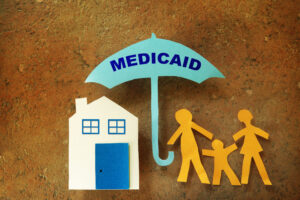How much does CDPAP pay in New York

CDPAP Program in New York
The Consumer Directed Personal Assistance Program (CDPAP) is a New York State Medicaid program that allows consumers to recruit, hire, and direct their own caregivers. CDPAP participants are those requiring assistance with daily tasks and/or have chronic medical conditions. CDPAP caregivers are often family members or friends of the person receiving care, but may also be professional caregivers.
The CDPAP program trains and pays the caregivers to provide personal care services to the participants. The participants have more control over their care, the program is flexible and can be tailored to meet the every participant’s needs, and it can be more cost-effective than traditional home care services.
If you believe a loved one needs assistance and you are interested in being their caregiver, call us at (917) 808-8012 and see if they qualify.
What is the CDPAP Salary?
The payment rates for the Consumer-Directed Personal Assistance Program (CDPAP) in New York can vary depending on several factors, including the Medicaid program, the region within New York, the level of care needed, and the specific circumstances of the recipient and caregiver. In New York, the CDPAP program typically pays caregivers a wage for their services.
The wage rates are determined by Medicaid and are subject to change. Currently, the hourly pay range is $16.20-$21.09 with overtime hours and pay available. The maximum hours worked varies and a nurse will assess how much care a consumer requires and determine your schedule. Overtime pay is available if the rates range between $24 – $31.63 an hour. A full breakdown of CDPAP personal care rates can be found on the New York State Department of Health Website.
It’s important to keep in mind that Medicaid has specific requirements for CDPAP, and caregivers must meet certain qualifications to participate in the program. These qualifications may include completing training and certification, such as becoming a certified home health aide.
To get the most accurate and up-to-date information regarding CDPAP payment rates in New York, you should contact your local Medicaid office or a CDPAP provider in your area.
Who is eligible to be a CDPAP Caregiver?
This section will detail the criteria for being a CDPAP caregiver, including restrictions, physical requirements, identification, and necessary paperwork:
- The spouse of the care recipient may not be the caregiver.
- The care recipient may not have their caregiver also be their designated representative. This allows for a clear separation of roles and responsibilities when providing care.
- The CDPAP caregiver must pass a physical exam to prove they can provide the necessary care and support.
- If the caregiver needs to drive the care recipient as part of their duties, the CDPAP caregiver must have a valid driver’s license and proof of insurance.
- The CDPAP caregiver must agree to follow the care plan as provided, completing the tasks and responsibilities required to meet the care recipient’s needs.
- Complete a W-4 form for tax withholding and an I-9 form to verify work eligibility.
There are no specific licensing requirements to be a CDPAP caregiver. However, the caregiver must meet the criteria listed above.
Caregiver Duties and Qualifications
People may think that previous experience in the healthcare field is required to be a personal assistant, but that is not the case. Those providing in-home care as a personal assistant are trained by the program and provide all the necessary information to provide quality personal care.
The caregiver’s duties vary based on the needs of the consumer being cared for. Those providing personal care may be responsible for tasks such as:
Personal Care:
- Assist with bathing, showering, and grooming.
- Help with toileting and incontinence care.
- Assisting with dressing/undressing.
- Help with oral hygiene.
Mobility Assistance:
- Help getting in and out of bed or a wheelchair.
- Assist with walking or using mobility aids (e.g., walkers, canes).
- Helping the individual with transitions between different seating or resting positions.
Meal Preparation:
- Plan and cook meals that meet clients dietary needs.
- Feeding assistance (if required).
Household Chores:
- Light housekeeping tasks, such as doing laundry and cleaning.
- Grocery shopping and meal planning.
- Organizing and maintaining a safe and comfortable living environment.
Companionship:
- Provide companionship and emotional support.
- Engage in conversation, reading and/or playing games.
- Accompany the individual to appointments, social outings, or running errands.
Respite Care:
- Provide temporary relief to primary caregivers (usually family members) to prevent caregiver burnout.
Medication Management and Health Monitoring:
- Administer medications according to prescribed schedules.
- Keep track of medication refills and coordinate with healthcare providers.
- Monitor the individual’s overall health and well-being.
- Report any changes in health status to family members or healthcare providers.
- Keep detailed records of care provided, including medications administered, changes in condition, and any incidents or accidents.
- Assist with medical equipment or devices as needed.
Safety and Security:
- Ensure the home environment is free from hazards.
- Implement fall prevention measures.
- Respond to emergencies or managing emergency situations.
Specialized Care:
- Some caregivers may have specialized training to provide care for individuals with specific medical conditions, such as Alzheimer’s disease, Parkinson’s disease, or diabetes.
End-of-Life Care:
- Provide compassionate care and emotional support to individuals in hospice or palliative care situations.


